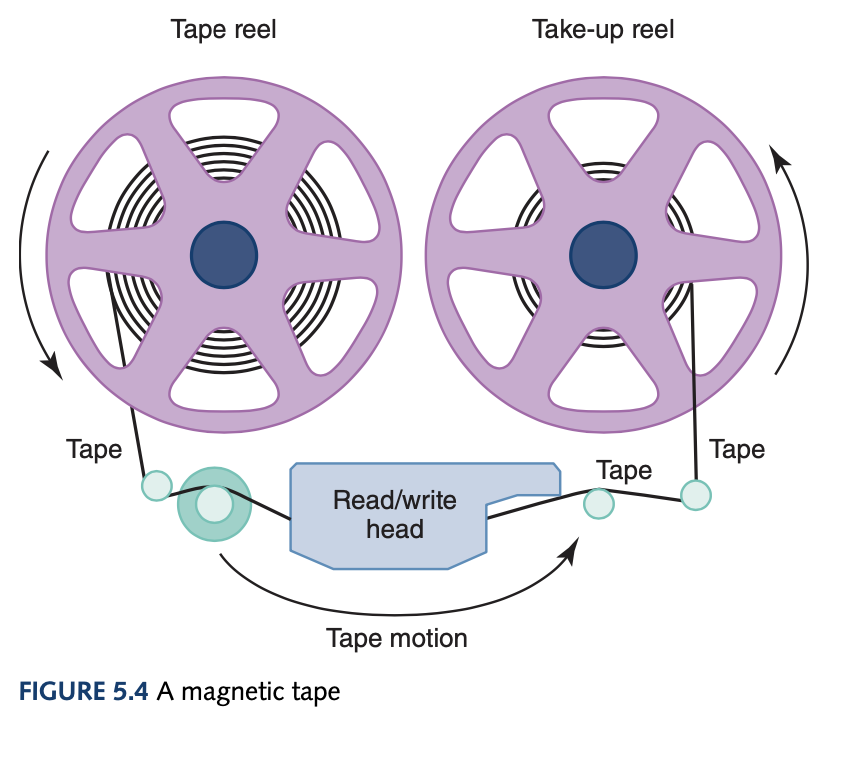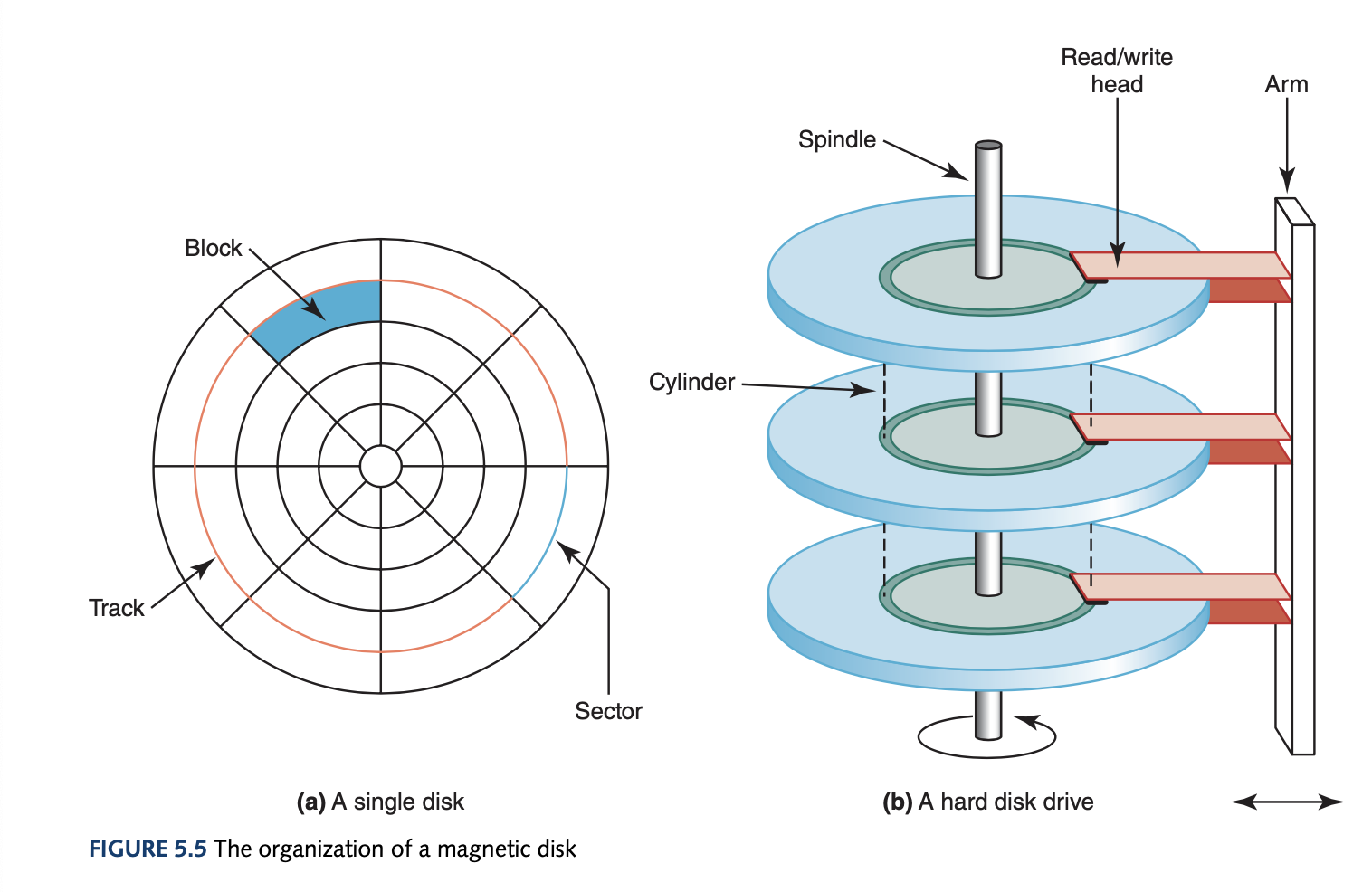w# Computer Memory
- Think of memory like a set of drawers
- Each drawer has an address
- Collection of cells with unique physical addresses
- Number of bits in each location varies from one machine to the other
- More common computers are byte addressable
- Memory addresses are made up of a certain number of bytes
- The contents of memory alone aren't too useful
- Need to know how to interpret the contents
- Main memory
- Active programs and data stored
- Volatile
- Secondary memory
- Nonvolatile
- Data maintained even with power off
RAM
- Random Access Memory
- Each location can be accessed and changed
- Volatile
- Does not retain its bit configuration when the power is turned off
- Loses data when power is off
ROM
- Read Only Memory
- Each location can be accessed but not changed
- Contents are permanently burned into the chip
- Used for storing instructions that the computer needs to start itself
Secondary Storage Devices
- Used because main memory is volatile and limited
- Places to store data outside of main memory
Magnetic Tape

- First truly mass storage device
- Cannot hold much data
- Requires you to scrub to find data in the middle
- Not efficient
- Four measures of efficiency
- Seek time
- Time it takes for read/write head to get positioned over specified track
- Latency
- Time it takes for specified sector to spin to read/write head
- Access time
- Time it takes for block to start being read
- Sum of seek time and latency
- Transfer rate
- Rate at which data moves from the disk to memory
- kasodkasoda Magnetic tape
- Seek time
Magnetic Disks

- Disk drive
- Cross between CD player and tape recorder
- Read/write head travels across a spinning magnetic disk
- Retrieves or records data
- Surface of each disk is organized into tracks and sectors
- Tracks
- Concentric circles around surface of disk
- Divided into sectors
- Sector
- A division of a track
- Holds a block of information as continuous sequence of bits
- Blocks of data nearer center are more densely packed
- Tracks
Addresses
- Logical address
- Reference to a stored value relative to the program making the reference
- Physical address
- Actual address in the main memory device
- Address binding
- Mapping from a logical address to a physical address
- As long as we keep track of where a program is stored, we can always determine the physical address that corresponds to any logical address